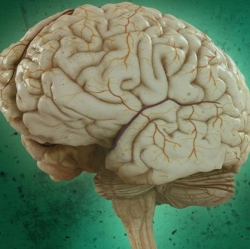
In the decade since the genome was sequenced in 2003, scientists and doctors have struggled to answer an all-consuming question: Which DNA mutations cause disease? A new computational technique developed at the University of Toronto may now be able to tell us.
A Canadian research team led by professor Brendan Frey has developed the first method for ‘ranking’ genetic mutations based on how living cells ‘read’ DNA, revealing how likely any given alteration is to cause disease. They used their method to discover unexpected genetic determinants of autism, hereditary cancers and spinal muscular atrophy, a leading genetic cause of infant mortality.
Think of the human genome as a mysterious text, made up of three billion letters. "Over the past decade, a huge amount of effort has been invested into searching for mutations in the genome that cause disease, without a rational approach to understanding why they cause disease," says Frey, also a senior fellow at the Canadian Institute for Advanced Research.
"This is because scientists didn’t have the means to understand the text of the genome and how mutations in it can change the meaning of that text." Biologist Eric Lander of the Massachusetts Institute of Technology captured this puzzle in his famous quote: "Genome. Bought the book. Hard to read."
What was Frey’s approach? We know that certain sections of the text, called exons, describe the proteins that are the building blocks of all living cells. What wasn’t appreciated until recently is that other sections, called introns, contain instructions for how to cut and paste exons together, determining which proteins will be produced. This ‘splicing’ process is a crucial step in the cell’s process of converting DNA into proteins, and its disruption is known to contribute to many diseases.
Most research into the genetic roots of disease has focused on mutations within exons, but increasingly scientists are finding that diseases can’t be explained by these mutations. Frey’s team took a completely different approach, examining changes to text that provides instructions for splicing, most of which is in introns.
Frey’s team used a new technology called ‘deep learning’ to teach a computer system to scan a piece of DNA, read the genetic instructions that specify how to splice together sections that code for proteins, and determine which proteins will be produced.
Unlike other machine learning methods, deep learning can make sense of incredibly complex relationships, such as those found in living systems in biology and medicine. "The success of our project relied crucially on using the latest deep learning methods to analyze the most advanced experimental biology data," says Frey.
Once they had taught their system how to read the text of the genome, Frey’s team used it to search for mutations that cause splicing to go wrong. They found that their method correctly predicted 94 percent of the genetic culprits behind well-studied diseases such as spinal muscular atrophy and colorectal cancer, but more importantly, made accurate predictions for mutations that had never been seen before.
They then launched a huge effort to tackle a condition with complex genetic underpinnings: autism spectrum disorder. "With autism there are only a few dozen genes definitely known to be involved and these account for a small proportion of individuals with this condition," says Frey.
Frey’s team compared mutations discovered in the whole genome sequences of children with autism, but not in controls. Following the traditional approach of studying protein-coding regions, they found no differences. However, when they used their deep learning system to rank mutations according to how much they change splicing, surprising patterns appeared.
"When we ranked mutations using our method, striking patterns emerged, revealing 39 novel genes having a potential role in autism susceptibility," Frey says. And autism is just the beginning, this mutation indexing method is ready to be applied to any number of diseases, and even non-disease traits that differ between individuals.
